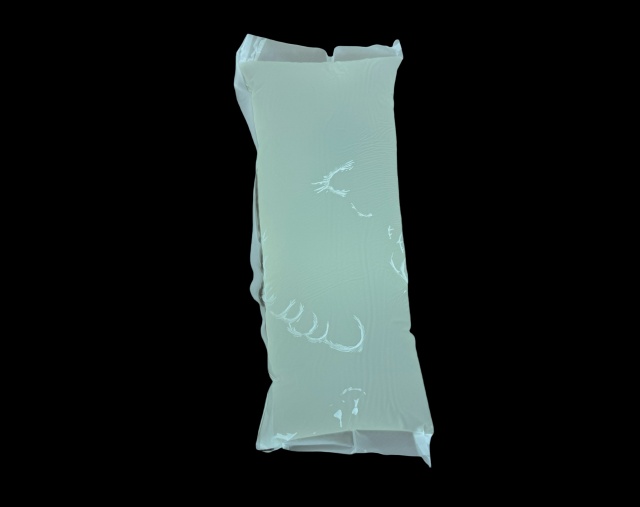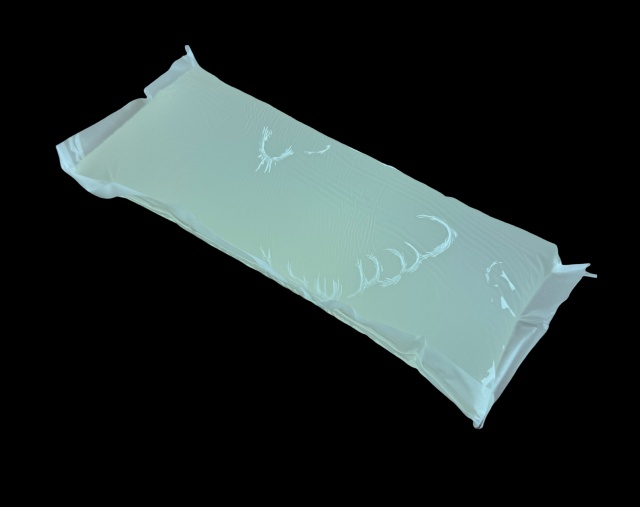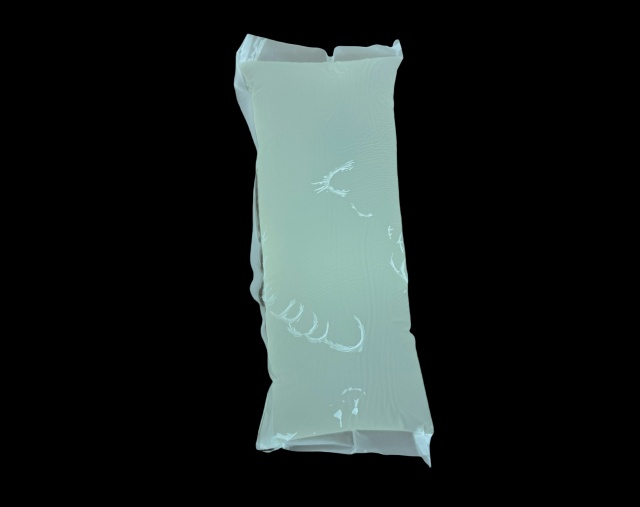
Back glue, also known as adhesive glue, is a critical component used in disposable hygiene products like diapers and sanitary pads. Its primary purpose is to adhere to fabrics or nonwoven materials, securing different layers of the product in place during use. However, one potential concern that arises with the use of adhesives in hygiene products is whether it leaves any residue on the skin or fabric after removal, and what measures can be taken to minimize this issue. This article will explore the nature of back glue, its interactions with materials, and strategies for reducing adhesive residue to improve user experience.
Understanding Back Glue in Hygiene Products
Back glue in hygiene products is a type of pressure-sensitive adhesive (PSA) formulated to ensure the secure attachment of different layers, such as the top sheet, absorbent core, and backing layer. The adhesive must meet a balance between strong bonding to prevent product failure during use and easy release for comfort and cleanliness during removal. Adhesives used in diapers and sanitary pads are typically made from thermoplastic polymers combined with tackifying resins and plasticizers to achieve a combination of stickiness, flexibility, and durability.
Factors Contributing to Residue Formation
Adhesive residue can be an inconvenience for users, leading to discomfort or skin irritation. Understanding the conditions that lead to residue formation can help address this issue effectively.
Adhesive Composition
The specific composition of the back glue influences whether it leaves residue on the skin or fabric. Thermoplastic polymers in adhesives can sometimes form bonds that do not easily break when the product is removed. Low-quality adhesives or formulations with inappropriate tackifiers may exhibit poor "clean peel" characteristics, leaving behind a sticky layer or small adhesive particles on the surface.
Skin and Fabric Interaction
The interaction between the adhesive and the material—whether it is skin or fabric—affects residue formation. The adhesive’s cohesion (the internal bonding strength of the adhesive itself) must be balanced with its adhesion (the bonding strength to the substrate). When cohesion is weaker than adhesion, residue is more likely to be left behind.
For skin, natural factors such as body oils, sweat, and even temperature can affect the adhesion properties of the glue. For fabrics, the texture, type of fibers, and overall surface roughness play a role in the way adhesive interacts with the material.
Duration and Environmental Conditions
The duration for which a product is worn and the environmental conditions can also influence adhesive residue formation. Extended contact time allows the adhesive to penetrate fabric fibers or conform to the skin surface, making residue more likely. High temperatures or humidity can soften adhesives, altering their properties and leading to less clean removal.
Impact of Adhesive Residue
The presence of adhesive residue has implications for both skin health and comfort. Prolonged contact with adhesive residue can irritate the skin, especially for people with sensitive skin or conditions like eczema. The sticky residue can trap dirt, bacteria, or moisture, potentially leading to rashes or infections. For fabrics, adhesive residue may cause staining or compromise the material's texture, leading to discomfort and reduced usability.
Methods to Minimize Adhesive Residue
Manufacturers of diapers and sanitary pads can take several steps to minimize adhesive residue, thereby enhancing the safety and comfort of these products.
Optimizing Adhesive Formulation
One of the most effective ways to minimize adhesive residue is through careful formulation of the adhesive itself. Adhesives must be designed with the appropriate balance between adhesion and cohesion to ensure a "clean peel" without leaving residue. The use of high-quality thermoplastic polymers and tackifiers is essential, and the formulation should be tailored to accommodate varying skin types and environmental conditions.
A key approach is using medical-grade adhesives that have been tested for biocompatibility. Such adhesives provide adequate bonding strength but can be removed without damaging the skin or fabric. Additionally, incorporating plasticizers that maintain adhesive flexibility under different conditions can help reduce residue formation.
Use of Release Agents and Barrier Layers
Applying a release agent or creating a barrier layer between the adhesive and the skin or fabric is another strategy. A release liner or a thin nonwoven material can act as an intermediary, reducing the direct contact of adhesive with the skin or fabric. This approach is commonly used in sanitary pads, where a barrier layer helps ensure that adhesive does not stick directly to undergarments.
In addition, certain skin-friendly lotions or coatings can be applied to the adhesive side to create a slight barrier that minimizes residue formation. These lotions are often dermatologically tested to ensure they do not cause irritation while effectively reducing the adhesive's ability to leave a sticky residue.
Adjusting Adhesive Application Patterns
Another method for reducing residue is optimizing the adhesive application pattern. Rather than applying adhesive as a continuous layer, a patterned application—such as stripes or dots—can effectively secure the components of a diaper or pad without excessive contact with skin or fabric. This reduces the surface area of adhesive that directly interacts with the material, thereby decreasing the likelihood of residue.
Testing for Peel Performance
Thorough testing for peel performance is crucial in developing adhesives for hygiene products. Peel performance refers to the ability of the adhesive to release cleanly from a surface without leaving residue. Manufacturers should conduct peel tests under different conditions, including varying temperatures, humidity levels, and skin types, to ensure consistent performance. By rigorously assessing peel strength and ensuring it falls within the optimal range, manufacturers can reduce the risk of adhesive residue.

User Education and Instructions
Proper usage of diapers and sanitary pads can also help in minimizing adhesive residue. Users should be informed about the recommended duration of use, proper removal techniques, and storage conditions. For instance, diapers or pads should be changed promptly after becoming saturated, as prolonged contact with moisture can alter adhesive properties and increase the chance of residue. Additionally, users should be advised to remove the products slowly and at a consistent angle to minimize residue.
Innovations in Adhesive Technologies
The hygiene product industry has made significant advancements in adhesive technology, focusing on reducing residue while maintaining product effectiveness. Some of the recent innovations include:
Hot-Melt Adhesives
Hot-melt adhesives, made from thermoplastic rubbers, have become popular in disposable hygiene products. These adhesives are applied in a molten state and set upon cooling, creating a flexible and reliable bond. The advantage of hot-melt adhesives lies in their formulation versatility, allowing for adjustments that minimize residue while maintaining adhesion properties.
Silicone-Based Adhesives
Silicone-based adhesives are increasingly being explored as an alternative to traditional thermoplastic adhesives. Silicone adhesives are biocompatible and exhibit excellent peel properties, allowing for residue-free removal from skin and fabrics. They are particularly beneficial for individuals with sensitive skin, as they cause less irritation compared to other adhesives.
Bio-Based Adhesives
With a growing emphasis on sustainability, bio-based adhesives are being developed using renewable resources like natural rubber and plant-derived resins. These adhesives are designed to be skin-friendly, biodegradable, and less likely to leave residue. Although still in the early stages of adoption, bio-based adhesives show promise for improving both environmental impact and user comfort.
Conclusion
Back glue plays an essential role in ensuring the effectiveness of disposable hygiene products like diapers and sanitary pads. However, adhesive residue on the skin or fabric after removal can pose challenges related to comfort, skin health, and product performance. Addressing this issue requires a multifaceted approach, including optimizing adhesive formulations, incorporating barrier layers, applying adhesives in strategic patterns, and conducting rigorous peel testing.
Innovations in adhesive technology—such as the development of silicone-based and bio-based adhesives—are paving the way for improved user experiences, with reduced residue and enhanced skin compatibility. Manufacturers must continue to prioritize user comfort and safety by investing in advanced adhesive technologies and adhering to stringent testing standards.
By focusing on minimizing adhesive residue, the hygiene product industry can enhance the quality and reliability of diapers and sanitary pads, ultimately contributing to the well-being and satisfaction of consumers.



